Picking out the right biosafety cabinet (BSC) for your lab? Let's chat about what really matters! When you're in the thick of science, having a BSC that's a breeze to clean and feels like a dream to use is probably at the top of your wishlist, right?
Here's what you need to consider:
What's on Your Bench?
Make sure the BSC you're eyeing is up to the task for the type of specific biological agents you're dealing with. Whether it's bacteria, viruses, or just some mysterious goo, your BSC should be ready for the challenge.
Your Comfort is Key:
Picture this: hours at the bench, but no backache or eye strain. Dreamy, isn't it? That's why ergonomics matter. Find a BSC that's not just a box with a fan but a cozy nook for your scientific endeavors.
Be Kind to Mother Earth:
In the world of whirring machines, a little energy efficiency goes a long way. Go for a BSC that's gentle on our planet and your utility bills. It's all about striking that perfect balance between top-notch performance and being eco-friendly.
Safety First, Always:
Last but not least, let's talk about safety and quality. Your ideal BSC should be like a trusty lab guard dog — always on the lookout for potential hazards and keeping those pesky contaminants in check.
What and whom does a level 2 BSC protect?
When it comes to handling moderate-risk biological agents and materials, a Level 2 Biosafety Cabinet (BSC) is your lab's first line of defense. It's meticulously designed to offer a triad of protection:
Personnel Protection:
The safety of lab workers is paramount. This cabinet is engineered to shield you from exposure to infectious agents, ensuring a safer work environment.
Product Protection:
Precision in research is key. The Level 2 BSC ensures that the samples and materials you're working with remain uncontaminated from external particles, thereby maintaining the integrity of your experiments.
Environmental Protection:
Containment is crucial. This cabinet is adept at preventing potentially contaminated air from leaving its confines, thereby protecting the broader lab environment and beyond.
Biosafety cabinet vs. fume hood
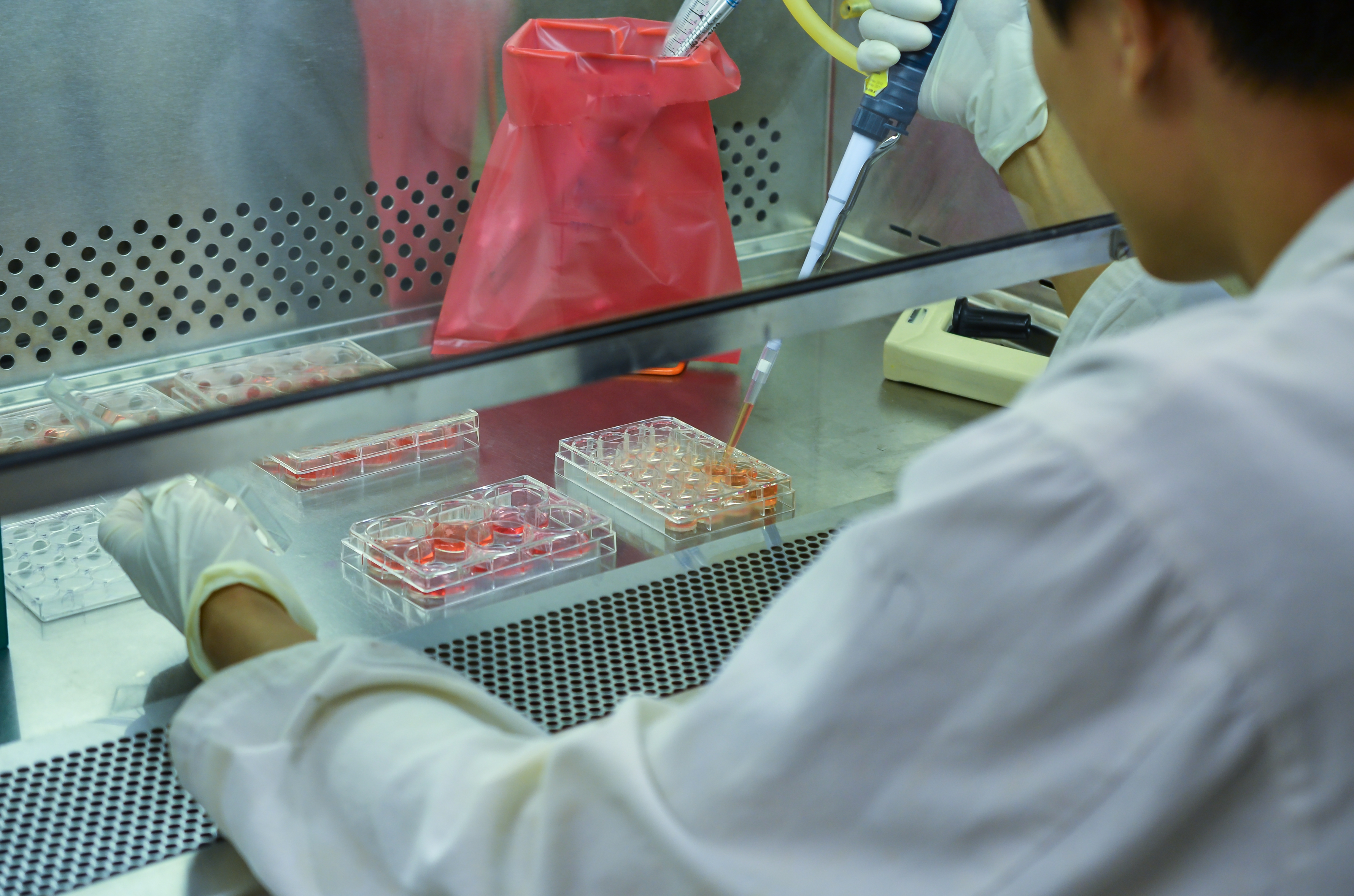
While they may look similar, biosafety cabinets and chemical fume hoods serve different purposes. Fume hoods primarily protect users from inhaling hazardous chemicals, removing fumes and aerosols from the work area. In contrast, BSCs are designed to provide a clean work environment and protect against infectious agents or toxins, safeguarding not just the user but also the material and the surrounding environment. Key differences include:
HEPA Filtration: BSCs use HEPA filters to trap infectious agents, a feature not found in chemical fume hoods.
Protection Levels: BSCs offer comprehensive protection – for the user, the environment, and the product.
Can you have a biosafety cabinet AND a chemical fume hood in the same room?
Yes, you can have both a Biosafety Cabinet (BSC) and a Chemical Fume Hood in the same room, but there are important considerations to ensure safety and effectiveness:
Adequate Ventilation and Airflow: Both BSCs and fume hoods require proper ventilation to function correctly. It's crucial that the room's ventilation system can support both pieces of equipment without compromising the airflow requirements of each.
Spatial Planning: Enough space must be allocated to prevent the airflows of the BSC and the fume hood from interfering with each other. This includes considering the air intake and exhaust locations for both.
- Room Layout: The placement of each piece of equipment in relation to the other, as well as their proximity to doors, windows, and high-traffic areas, should be carefully planned to minimize cross-contamination and ensure user safety.
- Usage Coordination: If procedures in the BSC and fume hood are likely to occur simultaneously, it's important to understand how these operations might impact each other, especially in terms of air quality and potential cross-contamination.
Safety Protocols: Establish clear safety protocols for the use of each piece of equipment, especially if hazardous chemicals or biological agents are involved. This includes training for personnel on how to safely work with both the BSC and fume hood within the same space.
- Regular Maintenance and Certification: Both BSCs and fume hoods require regular maintenance and certification to ensure they are functioning correctly and safely.
- Compliance with Regulations: Ensure that the setup complies with local, state, and federal safety regulations, as well as guidelines from organizations such as the CDC, NIH, and OSHA.
How frequently should your biosafety cabinet be certified?
To maintain the highest standards of safety and efficiency, regular certification of your biosafety cabinet is a must. This process is critical for:
Verifying the integrity of HEPA filters, which are essential for trapping harmful particles.
Ensuring that airflow velocity and patterns are within safe and effective ranges.
Confirming overall containment effectiveness of the cabinet.
For optimal performance and safety, it's advised to have your Level 2 BSC certified at least once a year, and definitely after any significant cabinet movement, repair, or filter replacement. This practice not only safeguards your research but also ensures a safe working environment for everyone in the lab. Remember, regular certification is not just a recommendation; it's a cornerstone of responsible lab management.
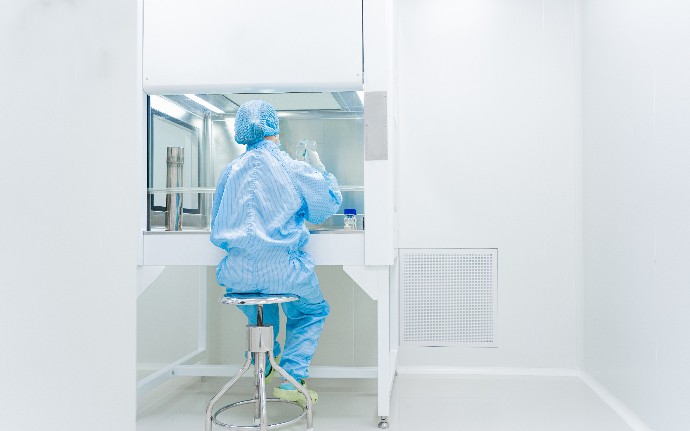
When to replace your biosafety cabinet?
Deciding whether to repair or replace an aging biosafety cabinet (BSC) can be challenging, especially when considering the financial implications. Here, we break down the costs and benefits, helping you make an informed decision.
As a BSC ages, maintenance costs can escalate significantly. By the tenth year, you could be spending an estimated 125% more on maintenance than the cost of purchasing a new BSC. This means that the cumulative maintenance costs over time will exceed the price of acquiring a new cabinet, making replacement a financially sound decision.
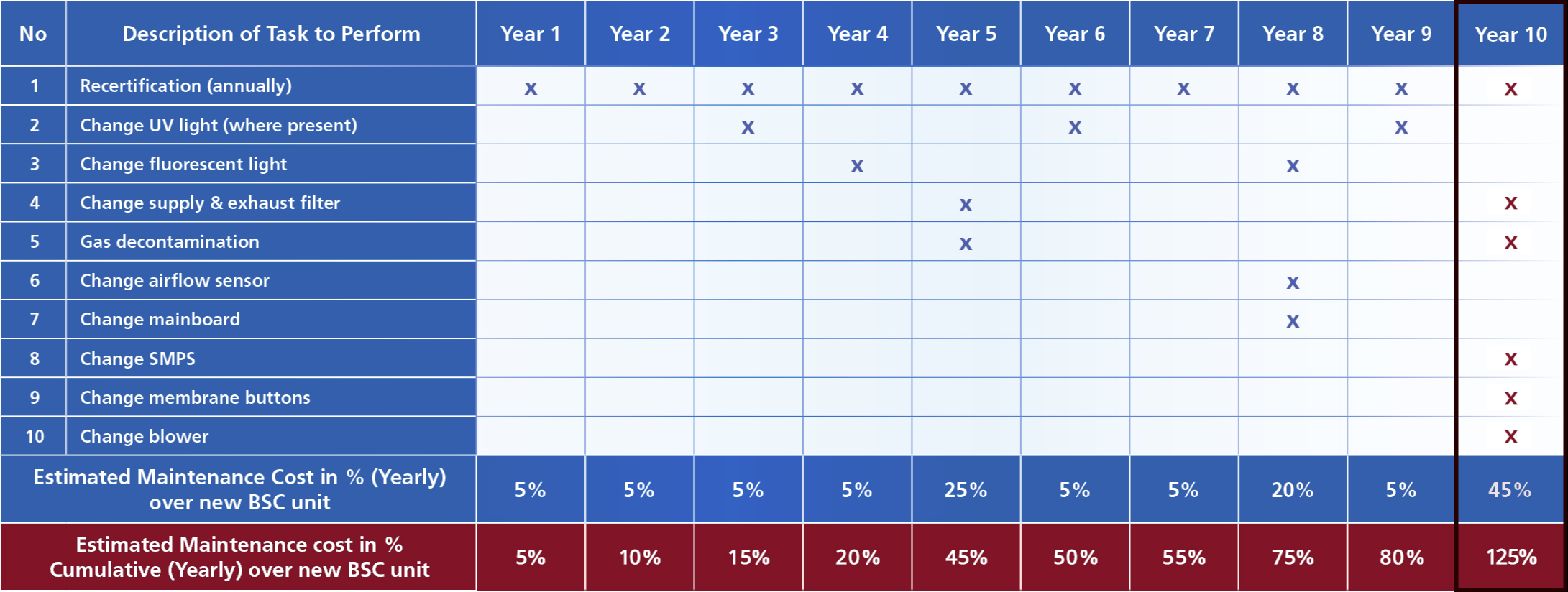
Top 5 benefits of upgrading your BSC
Energy Efficiency: Newer models are designed to be more energy-efficient, reducing your laboratory's energy consumption and costs.
Reduced Downtime for Service: With an upgraded BSC, expect fewer disruptions due to maintenance, keeping your lab's productivity high.
Ergonomics: Modern BSCs are built with the user's comfort in mind, potentially increasing work efficiency and reducing physical strain.
Enhanced Performance: Newer models come equipped with improved airflow systems and filtration technology, ensuring a safer work environment.
Advanced User Features: Upgraded cabinets often feature enhanced controls, digital interfaces, and improved safety features, offering a better user experience.
Alright, let's wrap this up with how you can prioritize your needs and make the best choice for your lab's future!
Why you'll love ESCO biosafety cabinets
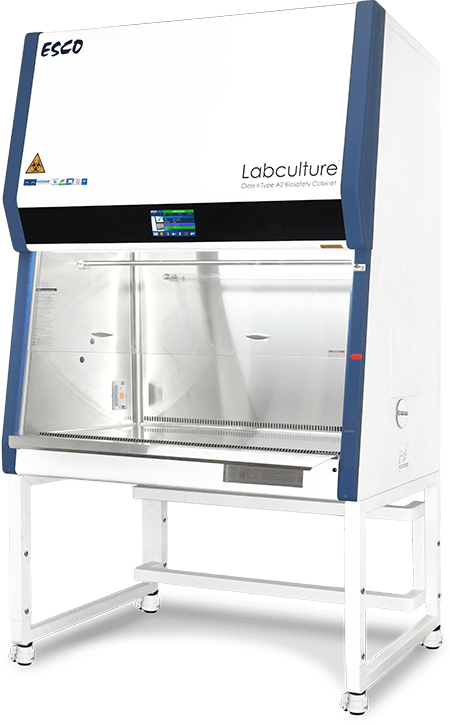
ULPA vs. HEPA filtration: Understanding the difference
Top quality, wallet-friendly
Sure, ESCO may not be as big as some of the other names out there, but when it comes to quality, they're punching way above their weight class. And here's the kicker – choosing an ESCO BSC could save your lab a hefty sum. We're talking up to 25% less than other brands. Over its lifetime, your total cost of owning an ESCO BSC is about 30% less – that's music to any budget-conscious lab manager's ears.
Say your current Thermo cabinets are costing you a fortune over the years. Switching to ESCO? That's a smart move for your wallet and your research.
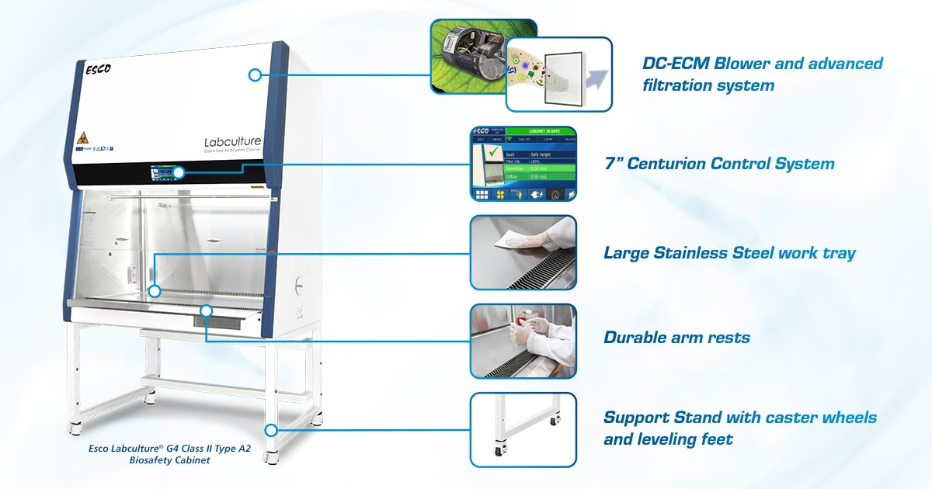
(Caption and image courtesy of ESCO)
Availability?